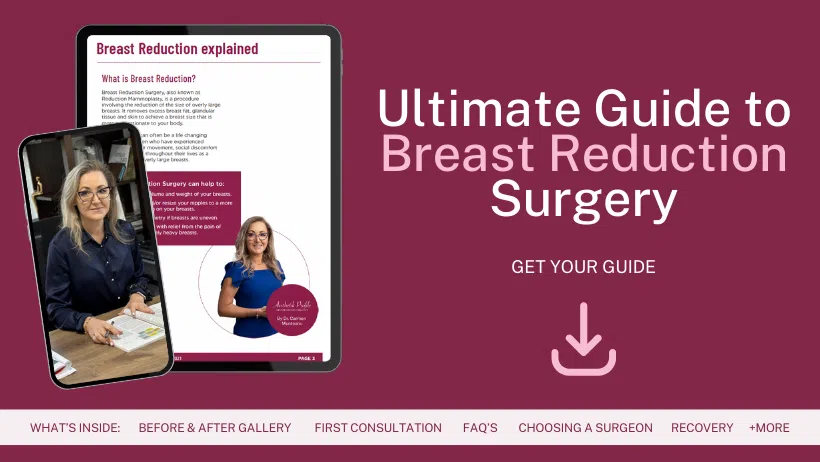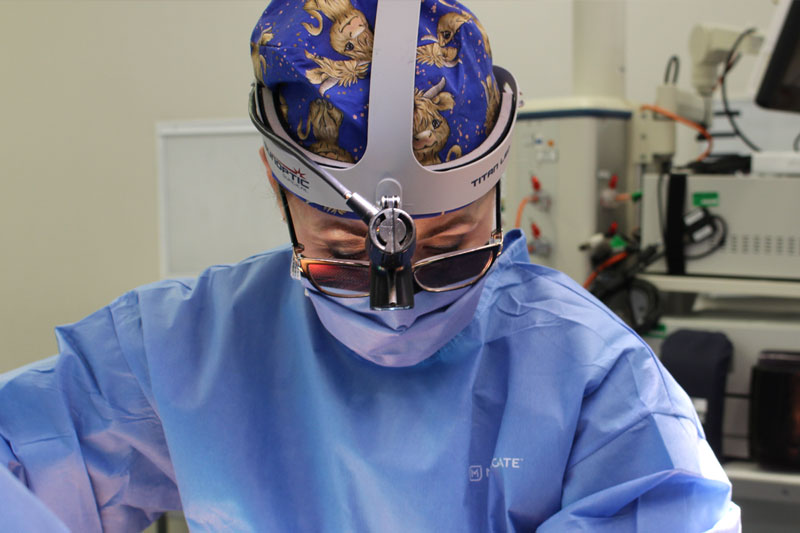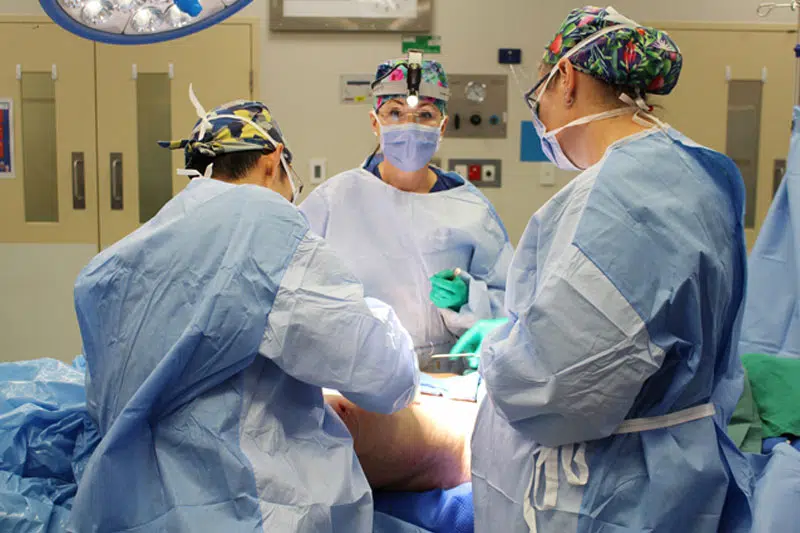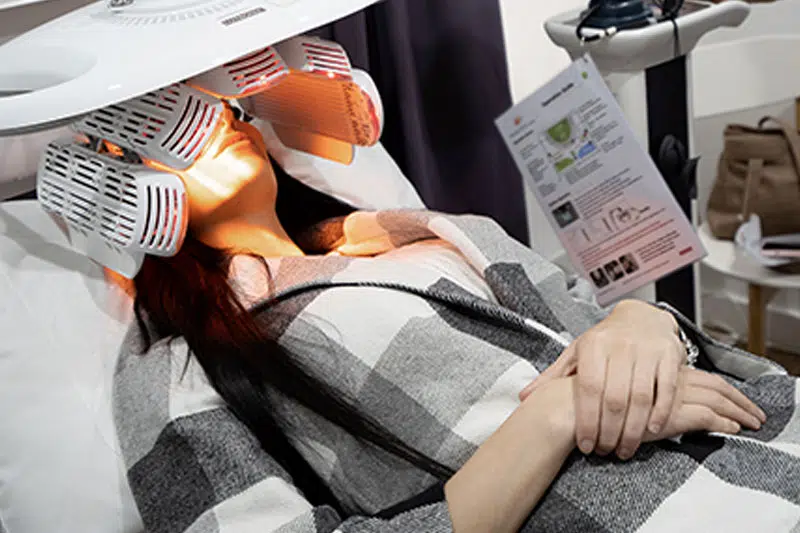Neck, Shoulder or Back Pain from Large Heavy Breasts? – Breast Reduction Surgery may help
Extremely large heavy breasts can cause problems ranging from muscle pain to skin inflammation. Abnormally large breasts (also called macromastia) is a medical condition that can strain your muscles and cause pain in your shoulders, neck, and back. So, is there a way to relieve the symptoms caused by heavy breasts? Breast reduction surgery is probably the only effective way to treat macromastia symptoms, with the added benefit of improving breast shape and contour. Our plastic surgeons are among the most experienced in performing breast surgery and breast reduction in Australia. The procedure can be done alone or combined with breast implants or breast lift to achieve the desired cosmetic outcomes.
Download Dr Carmen’s Guide to Breast Reduction Surgery – Reduction Mammaplasty
 Guide Breast Reduction
Guide Breast Reduction

There are many causes of neck pain and shoulder pain like obesity, disc problems, osteoarthritis, and nerve problems, and these might sometimes be the primary cause of your problems. Macromastia is thought to be a contributing factor to neck and upper back pain and is not usually the only cause. Either way, upper body musculoskeletal pain remains one of the most frequent complaints in patients wanting to reduce the size of their breasts. Thanks to gravity, heavy breasts pull down excessively on your upper body muscles and ligaments, causing you all kinds of problems. Having abnormally large breasts disturbs your center of gravity, so your shoulder, neck, and chest muscles will have to constantly work extra hard in order to support your breasts and adjust your posture. Even when you’re wearing a bra, the tight straps will still pull down on your shoulders and disturb your normal anatomy. This usually leads to muscle fatigue and strain, which can cause neck stiffness or pain, shoulder pain, chest wall pain, rib pain, and upper back pain in patients with heavy breasts.
What is Macromastia?
Macromastia (also called gigantomastia) is the medical term used to describe breasts that are disproportionately large compared to the rest of the body. In simpler terms, Macromastia means having extremely big breasts. So how big is TOO big when it comes to breast size? This is actually not a simple question to answer. The diagnosis of macromastia is not usually done according to a specific breast weight or breast size, and it rather depends on your specific case. If you have very large and heavy breasts that are causing you discomfort or medical problems, your plastic surgeon will diagnose you with macromastia and recommend breast reduction. Women with very heavy breasts most commonly complain of neck, shoulder, and upper back pain, all of which can be treated with reduction mammaplasty.

What other problems can large breasts cause?
In addition to causing neck and shoulder pain, large breasts can cause a wide range of problems:
- Headache: Straining and fatigue of your neck muscles can cause headaches. Doctors have observed that women with large breasts are more likely to develop a specific variant of headache called “tension headache”.
- Bra strap grooving: If you have heavy breasts and wear a bra, you may experience skin grooves or irritation under bra straps due to the weight of the breasts. The weight of your breasts can pull on your bra straps causing skin injury.
- Breast pain: The constant pulling of heavy breasts on your cooper’s ligaments might stretch them and cause you breast aches.
- Skin inflammation: Big overhanging breasts can rub against your skin and the underboob crease can be a hassle to clean. This can lead to bad hygiene, skin irritation, and infections, especially if you have droopy breasts.
- Postural imbalance: Having heavy breasts can disturb your center of gravity, so many of your muscles will contract abnormally to balance this out, and this leads to postural problems.
- Breathing troubles: Heavy breasts can make it harder for your lungs to expand and let air in.
- Finger numbness: Many women with macromastia report having numbness in their fingers. This happens when your breasts compress the nerves in your neck, a condition known as “thoracic outlet syndrome”.
Should you get a Breast Reduction?
So, you have very large breasts and are wondering if you should reduce them? There are many reasons why a woman would want to get a reduction mammaplasty:
- Symptomatic macromastia: Having one or more of the symptoms listed above is usually the main reason why women request breast reduction
- Poor mobility: Many women find it very hard to practice sports and perform some routine activities due to their large breasts.
If your large breasts are causing you unpleasant symptoms, your plastic surgeon will recommend breast reduction.
See more of Dr Carmen’s Breast Reduction Surgery Real Patient Before and After Gallery
How is breast reduction surgery done?
Reduction mammaplasty (breast reduction) is the treatment of choice for women who have abnormally large breasts that are causing them problems. The procedure is usually done in a hospital’s operating room. You will be put to sleep by a certified anaesthetist so that you don’t feel anything during the operation (a process called general anaesthesia). After cleaning your skin with antiseptic, your plastic surgeon will perform an incision around your nipple (periareolar incision), and extend it vertically on the lower pole of your breasts. A horizontal incision is then done along the underboob crease (inframammary incision). Your surgeon will then cut out the excess tissue and any excess skin to achieve the desired breast size. After that, the remaining skin will be pulled together tightly and your wound will be closed.
What to expect during recovery from a breast reduction?
After breast reduction, you might spend one night at the hospital to make sure everything is going well. Your surgeon might leave in a drain or two to drain out any leaky fluid or blood. These drains might be left with you for a few days when you leave the hospital. The change in size and shape of your breasts will be apparent immediately after surgery, however, it might take a couple of months to achieve full recovery. During the first few days after your surgery, you will naturally experience some pain around your breasts. This is usually controllable with oral painkillers that your surgeon will prescribe. You will also notice some bruising and swelling around your wounds. These are completely normal, and will slowly resolve slowly with time. You should take 10-14 days of home rest, during which you should avoid any strenuous activities.
Does breast reduction leave a scar?
Our surgeons use meticulous techniques to make sure the surgical wounds leave minimal scarring on the breasts, but still, reduction mammaplasty will leave a thin scar on your breasts. The scar around your areola is usually unnoticeable and fades into the surrounding pigmented skin. The same goes for the inframammary scar, which will blend into the underboob skin crease. The only noticeable scar will be the one extending from your nipple to the lower pole of your breast. Scars usually take a year to fully mature, during which they will become less apparent and leave a minimal trace. Our surgeons will provide clear recommendations and post-operative care plans to reduce scarring as much as possible.
What are the complications of breast reduction?
Reduction mammaplasty is generally considered a safe procedure that carries a low risk of complications. Here are the possible risks of breast reduction:
- Wound infection: If bacteria get into your wound, you might develop inflammation and infection. This is usually prevented with prophylactic antibiotics after your surgery.
- Seroma: Sometimes, fluid collects in your wound and starts leaking out. This is prevented by using drains.
- Hematoma: This is when blood accumulates in your wound. Hematomas can resolve on their own or might require drainage.
- Loss of nipple sensation: Since reduction mammaplasty is an invasive surgery, some of the nerves responsible for nipple sensation might get damaged. This might lead to numbness in your nipples or certain parts of your breast.
- Inability to breastfeed: During breast reduction surgery, a large amount of breast tissue is removed. This sometimes leads to the destruction of your milk-producing tissue and milk ducts, and subsequent difficulty or inability to breastfeed.
Can breast reduction be combined with other procedures?
Yes, in fact, many women who request breast reduction have less firm breasts and want to make them more lifted in addition to reducing their size. Reduction mammaplasty can be combined with the following procedures:
- Breast implants: Breast reduction with implants is ideal for women who have less firm and deflated breasts and want to make them more elevated. Implants enhance the shape and firmness of breasts and outline your cleavage by providing upper pole fullness. The right implant will make your breasts look and feel natural.
- Breast lift (mastopexy): Pregnancy, weight fluctuation, menopause, and aging can give you droopy breasts, lax breast skin, and downward-pointing nipples. This is why many times, breast reduction is combined with breast lifting to reposition the breasts and nipples and restore the breast firmness and tight contour.
Is breast reduction covered by medicare?
Luckily, Medicare and insurance are very likely to cover your breast reduction surgery if your plastic surgeon demonstrates that it’s a medical necessity. If your heavy breasts are causing you back, shoulder, or neck pain, skin inflammation, or mobility restriction, you are likely to be eligible for a rebate. If you want reduction mammaplasty purely for cosmetic reasons, you might not be covered by insurance.
Other frequently asked questions
What is the ideal way to treat heavy breast problems?
- There are several suggested non-surgical ways to treat large breast problems, like wearing a sports bra, using painkillers, and getting physiotherapy. Non-surgical alternatives to breast reduction are usually unsuccessful in treating symptomatic macromastia and breast reduction remains the gold standard.
Does losing weight reduce breast size?
- Weight loss for breast reduction is not effective. Losing weight is beneficial for your overall health and can help with your back and neck pain, but it’s unlikely to reduce your breast size enough to make a difference. Moreover, losing a lot of weight can make your breasts less firm and your skin lax.
How big do your breasts have to be to get a reduction?
- There’s no specific size or weight to get a breast reduction. Your plastic surgeon will determine that you have abnormally large breasts based on your normal anatomy and body proportions. If your large breasts are responsible for your symptoms, you would be a good candidate for breast reduction surgery.
Most women who have large and heavy breasts complain of back pain, neck pain, and shoulder pain. These problems, and other conditions caused by heavy breasts, can all be effectively treated with breast reduction surgery.
Further Reading – Medical References Sources:
- PubMed article on Breast reduction improves symptoms of macromastia and has a long-lasting effect
- PubMed article on Reduction mammaplasty improves symptoms of macromastia
- NCBI article on Relationship Between Brassiere Cup Size and Shoulder-Neck Pain in Women
- ASPS Breast Reduction article on What is breast reduction surgery?
- ASPS Article on Large breasts causing back pain? Breast reduction surgery offers relief









